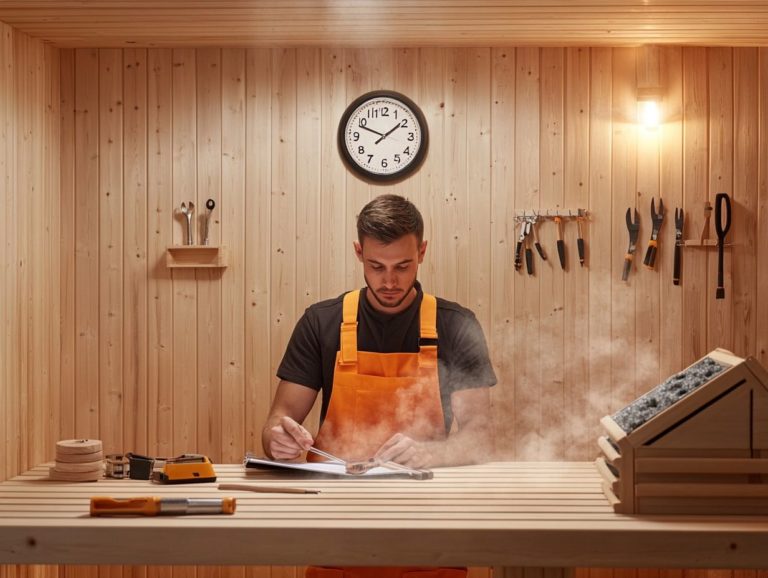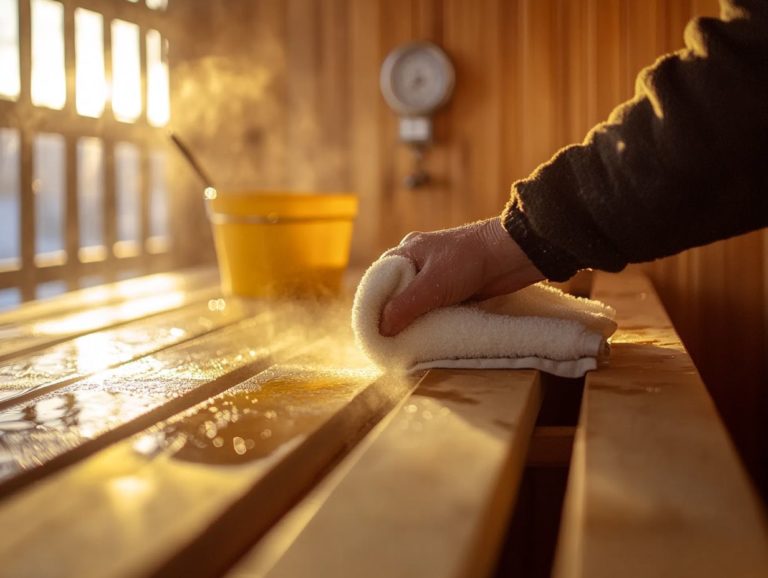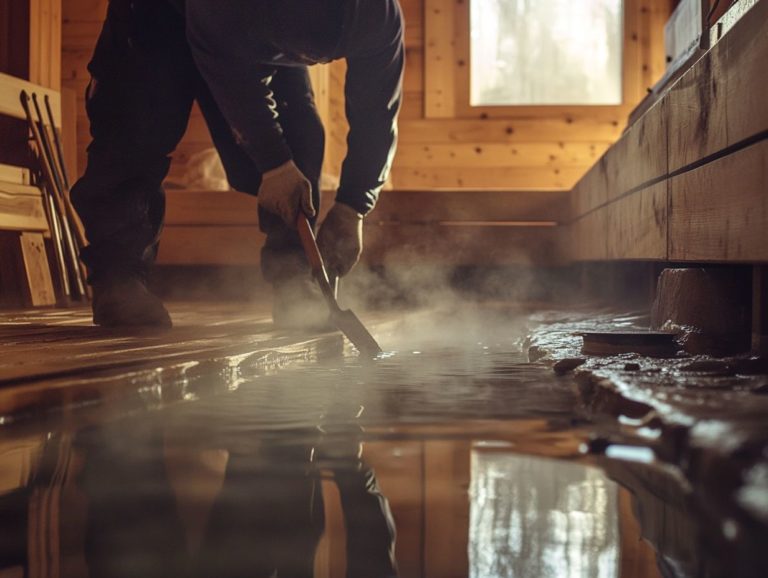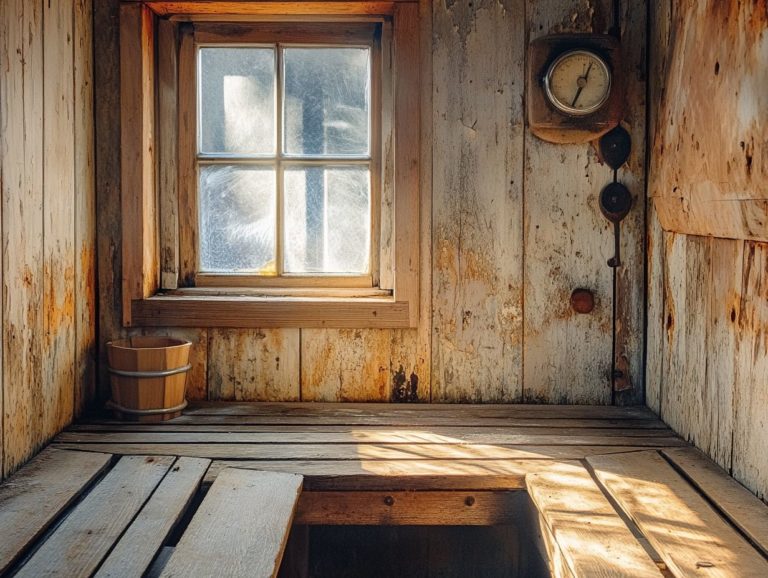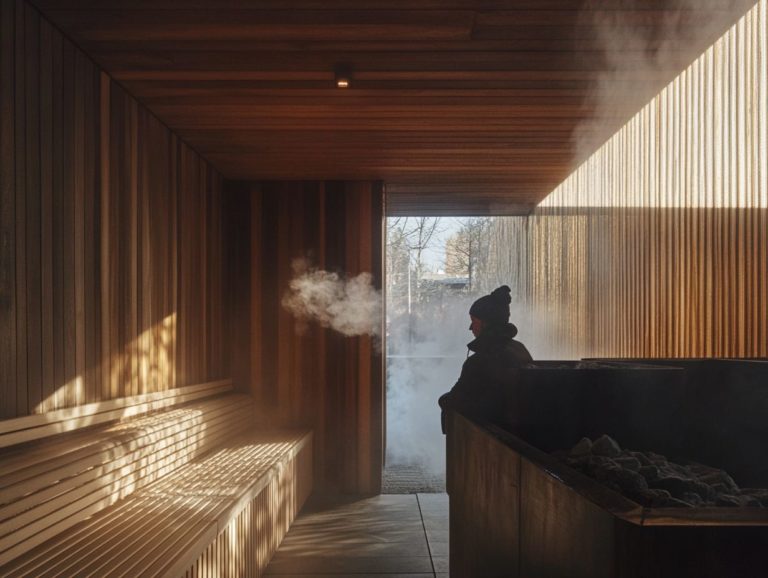How to Properly Ventilate Your Sauna
Proper ventilation is essential for your sauna experience. It provides comfort, safety, and efficiency while maintaining air quality.
This article explores the many benefits of effective ventilation, different ventilation systems, and crucial factors to consider before installation.
You ll leave empowered with the knowledge you need to achieve optimal ventilation in your sauna, along with practical tips for maintaining your system.
By the end, you’ll be ready to enhance your sauna environment, ensuring each session is more enjoyable and rejuvenating.
Contents
- Key Takeaways:
- The Importance of Proper Ventilation in a Sauna
- Types of Sauna Ventilation Systems
- Factors to Consider Before Installing a Ventilation System
- How to Ventilate Your Sauna
- Maintaining Your Sauna Ventilation System
- Frequently Asked Questions
- What is the importance of proper ventilation in a sauna?
- How often should I ventilate my sauna?
- What are the signs of poor ventilation in a sauna?
- Can I use a fan to ventilate my sauna?
- How can I improve ventilation in my sauna without installing additional equipment?
- What are the potential risks of inadequate ventilation in a sauna?
Key Takeaways:

- Proper ventilation is crucial for a safe and enjoyable sauna experience.
- There are various types of sauna ventilation systems available, including natural and mechanical options.
- Follow a step-by-step guide for proper maintenance to ensure effective airflow.
The Importance of Proper Ventilation in a Sauna
Good ventilation is key to elevating your overall sauna experience. It creates a comfortable environment with optimal air circulation and effectively regulates humidity levels while enhancing fresh air flow.
A well-ventilated sauna not only improves air quality but also reduces the risk of health issues linked to stale air, excessive moisture, and carbon monoxide buildup. To ensure you’re fully informed, check out sauna safety and addressing misconceptions. Whether you have an indoor or outdoor sauna, recognizing the importance of a strong ventilation system can significantly boost your enjoyment and extend the lifespan of your sauna setup.
Benefits of Good Ventilation
Good ventilation brings many benefits that enhance your sauna experience. It ensures a constant exchange of air, providing a steady supply of fresh air while effectively eliminating stale air and moisture.
This continuous flow of oxygen-rich air transforms your sauna experience into something invigorating, promoting relaxation and overall wellness. Effective ventilation plays a crucial role in minimizing health risks associated with poor air quality, such as respiratory issues and allergies, by reducing harmful pollutants and excess humidity from the sauna heater. For spa owners, adhering to sauna safety protocols is essential to ensure a safe environment for all users.
By creating a balanced environment, proper ventilation not only enhances your comfort but also amplifies the therapeutic effects of heat therapy, making each sauna session a refreshing break for both your mind and body. For optimal experiences, it’s important to follow sauna safety best practices.
Types of Sauna Ventilation Systems
Understanding the various types of sauna ventilation systems, including mechanical ventilation and gravity-based ventilation, is crucial for achieving optimal airflow and creating a comfortable atmosphere. You primarily have two options: mechanical ventilation and gravity-based ventilation.
Each of these systems has its own set of advantages and drawbacks, tailored to suit different sauna constructions and designs. By carefully considering your choice, you can significantly enhance your sauna experience.
Overview and Comparison
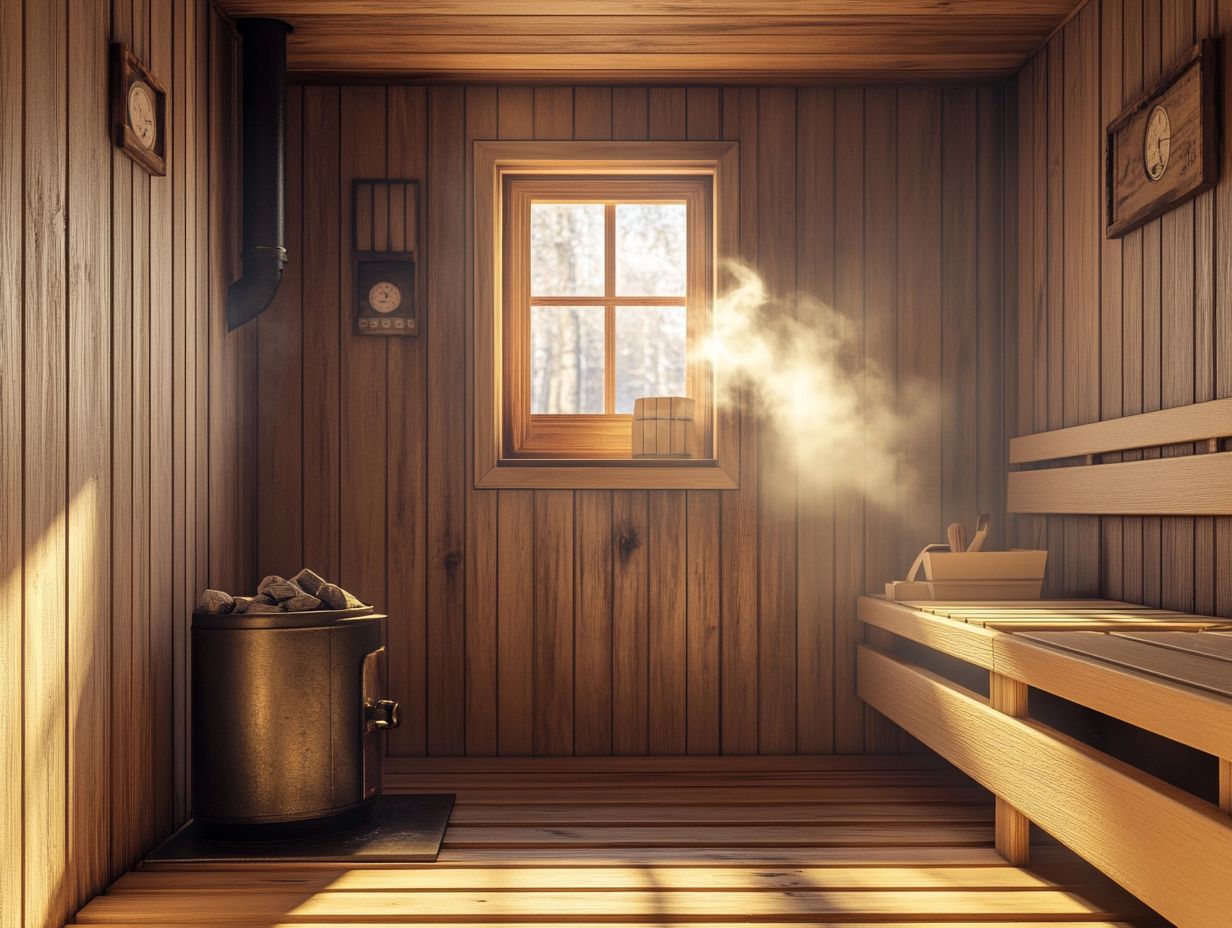
When comparing mechanical and gravity-based ventilation systems, consider their efficiency and suitability for your sauna design. Each system has its own unique features.
Mechanical ventilation uses fans or blowers for controlled airflow. This makes it ideal for larger or contemporary sauna setups where precise temperature regulation is essential.
In contrast, gravity-based ventilation relies on natural airflow dynamics. It’s often found in traditional saunas, prioritizing simplicity and lower energy consumption, especially with wood stoves.
Mechanical systems manage humidity levels well by expelling moist air. Meanwhile, gravity-based systems work better in smaller or rustic environments, utilizing wind and temperature fluctuations for natural ventilation.
Understanding airflow management, including duct size and placement, can significantly impact your sauna experience.
Factors to Consider Before Installing a Ventilation System
Before installing a ventilation system in your sauna, consider several important factors. Think about the size of your sauna, your usage intentions, and the specific heating requirements based on the sauna room volume.
Each of these elements plays a crucial role in achieving optimal performance and comfort.
Sauna Size and Usage
The size and intended usage of your sauna are key in determining the most effective ventilation system. Larger saunas need a robust airflow solution with adequate supply and exhaust air pipes to maintain temperature and air quality.
Smaller saunas benefit from simpler setups that efficiently circulate air without unnecessary complexity. For instance, a private home sauna used occasionally doesn’t need the same ventilation capacity as a communal sauna that serves multiple users; however, it’s important to follow guidelines for maintaining safety standards in sauna facilities to ensure a safe experience for everyone.
Understanding these nuances influences how air exchange functions and how well the heating system works. Tailoring the ventilation design ensures you experience optimal comfort, regardless of your sauna’s size or usage.
Cost and Maintenance
When considering a ventilation system for your sauna, both cost and maintenance are crucial factors. These can significantly affect the efficiency and longevity of your installation.
Understanding the initial investment for a quality system is essential. This not only impacts your budget but also plays a vital role in the long-term functionality of your sauna.
Ongoing maintenance is also important. Neglecting to service the system can lead to decreased performance and higher operational costs.
Implementing regular inspections and cleanings tailored to your ventilation type is a smart move. Choosing energy-efficient options and monitoring air quality can extend the lifespan of your system.
How to Ventilate Your Sauna
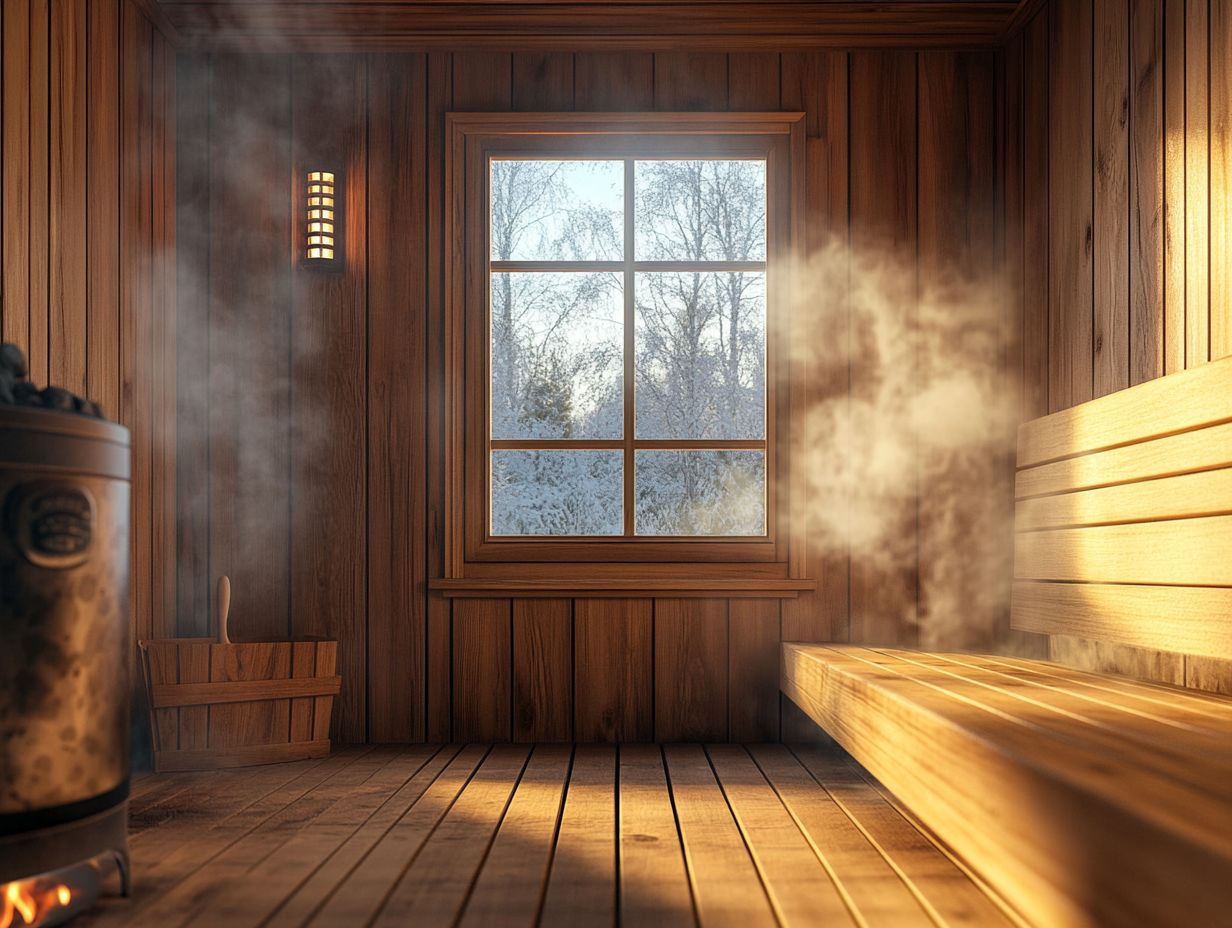
To ventilate your sauna effectively, understand the basics of airflow. This means installing supply air pipes and exhaust air pipes that are tailored to your sauna’s design.
Step-by-Step Guide
A comprehensive guide to ventilating your sauna will empower you to install the system effectively while optimizing airflow throughout the space.
The journey begins with careful planning, where choosing the right ventilation system tailored to your sauna’s size and design is paramount. Grasping the specific needs of airflow management will enhance your experience, lowering humidity levels and fostering a comfortable environment.
Next, it s essential to pinpoint the ideal locations for air intake and exhaust vents these are openings that bring fresh air in and let stale air out ensuring efficient circulation. Once that s established, the installation phase comes into play securing these components to guarantee both durability and functionality.
Finally, conducting a thorough test of the system will verify that airflow is effective, allowing you to reap the numerous benefits of proper ventilation. For added safety, it’s also essential to know how to secure your sauna against accidents, which is vital for your health and comfort in your sauna.
Maintaining Your Sauna Ventilation System
Regular maintenance of your sauna ventilation system is crucial for achieving efficiency, extending its lifespan, and ensuring optimal air quality. This entails routine cleaning of the supply air pipe and exhaust air pipe. Additionally, troubleshooting to prevent frequent problems from arising is essential.
These proactive steps will enhance your sauna experience and protect your money.
Cleaning and Troubleshooting Tips
Cleaning and troubleshooting your sauna ventilation system are essential tasks that can significantly enhance its efficiency and maintain optimal air quality within your sauna.
By systematically addressing common issues like blocked vents, faulty fans, or even dust buildup, you can ensure that the air circulating in your sauna remains fresh and invigorating. Regular maintenance not only optimizes airflow but also prevents long-term damage to the system, which could lead to costly repairs down the line. Additionally, it’s important to stay informed about understanding sauna safety legislation to ensure a safe and enjoyable experience.
Inspect filters monthly and clean them when needed, ensuring that the system operates smoothly and that air exchange remains efficient. Additionally, act now! Look for signs of wear or corrosion to catch problems early, helping you preemptively avoid issues that might compromise both performance and comfort.
Frequently Asked Questions
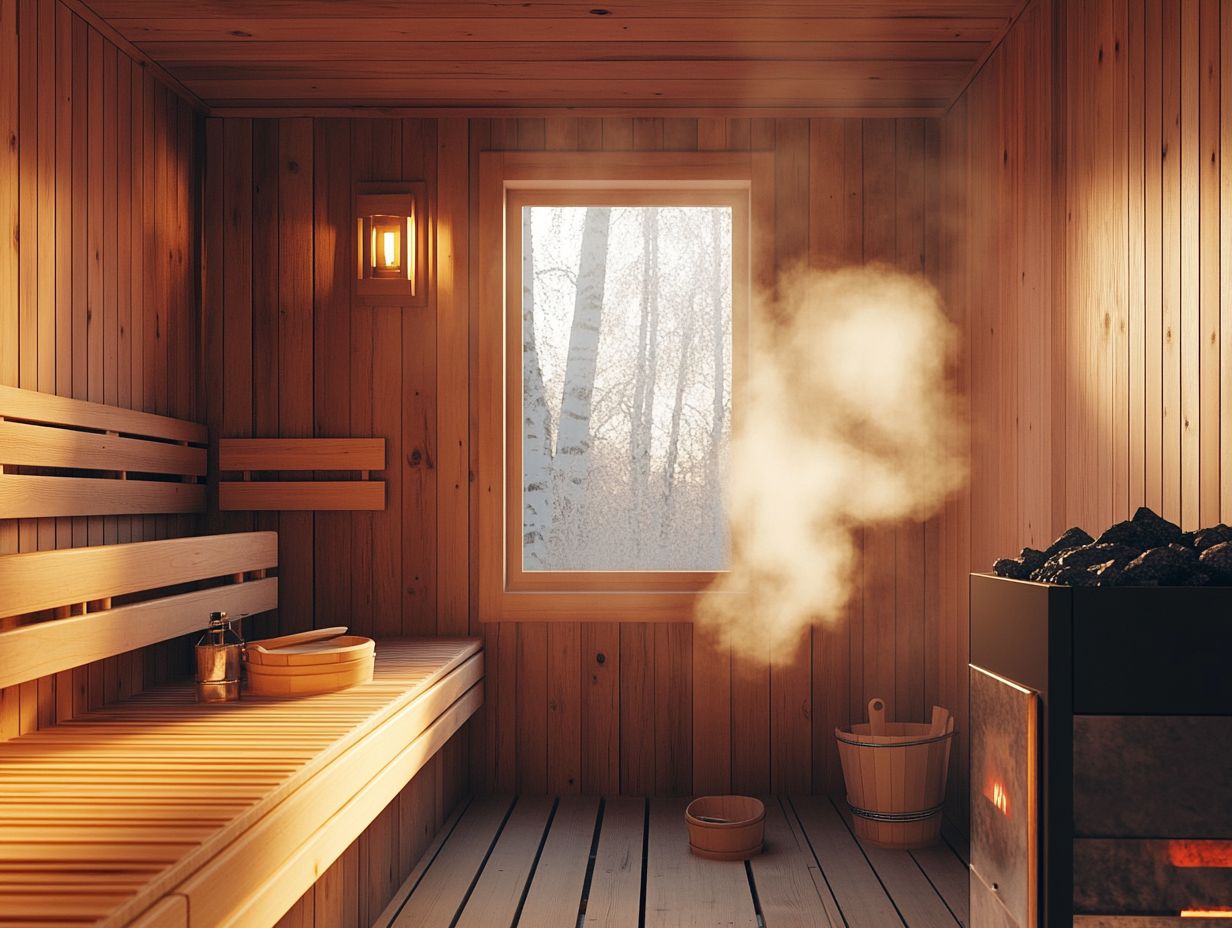
What is the importance of proper ventilation in a sauna?
Proper ventilation helps to circulate fresh air and oxygen-rich air while removing excess moisture and heat from the sauna, creating a more comfortable and healthy environment for users.
How often should I ventilate my sauna?
It is recommended to ventilate your sauna before and after each use, as well as periodically throughout longer sauna sessions to maintain a consistent airflow and enhance air circulation.
What are the signs of poor ventilation in a sauna?
The most common signs of poor ventilation include excessive condensation on the walls and ceiling, a musty or unpleasant odor, and an uncomfortable level of heat and humidity, which can indicate issues with the ventilation system.
Can I use a fan to ventilate my sauna?
Yes, a fan can boost ventilation in a sauna, especially when combined with an exhaust air pipe to facilitate proper air exchange. However, it is important to ensure that the fan is designed for use in high temperatures and is safely positioned away from any water sources.
How can I improve ventilation in my sauna without installing additional equipment?
Opening doors and windows in the sauna room can help to improve air circulation and ventilation, ensuring a flow of fresh air and reducing moisture buildup. Additionally, using a sauna door with adjustable vents or adding air vents to the existing door can also help to increase ventilation and improve the quality of oxygen-rich air in the sauna.
What are the potential risks of inadequate ventilation in a sauna?
Inadequate ventilation can lead to a build-up of mold, bacteria, and other harmful microorganisms in the sauna, contributing to issues such as respiratory problems and discomfort, ultimately affecting the overall sauna experience. It can also cause discomfort, reduce the effectiveness of the sauna experience, and negatively impact air quality, leading to potential health problems.
Ready to improve your sauna experience? Start your ventilation project today!

